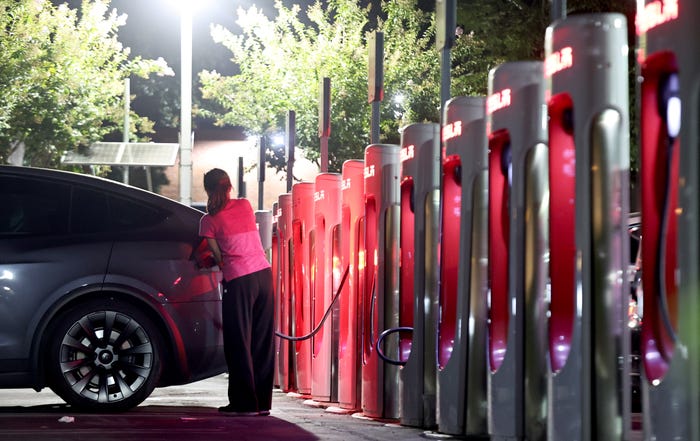Most Read: AI Robots Show Cat-Like Agility, Volvo Reveals Self-Driving TruckMost Read: AI Robots Show Cat-Like Agility, Volvo Reveals Self-Driving Truck
Also inside, Boeing invests $70 million in flying taxi subsidiary Wisk Aero

Here are the most-read stories in IoT World Today this week:
AI-Powered Robots Show Off Cat-Like Agility at Robotics Conference
Quadruped robot developer Deep Robotics has unveiled its series of AI-enabled robots which can readjust their center of gravity when thrown in the air, landing on their feet like a cat.
The robots were showcased at this year’s IEEE International Conference on Robotics and Automation, which took place last week in Yokohama, Japan.
To achieve high levels of agility, the robots are trained using several AI simulations, with the robots’ avatar initially programmed to always be on a slant to strengthen its center of gravity control.
The models can also adapt to different terrains, including grass, grave, and rubble.
Read more about the robots >>>
Volvo Reveals Production-Ready Self-Driving Truck
Volvo has revealed its first-ever production-ready self-driving truck at the ACT Expo in Las Vegas.
Volvo describes its VNL Autonomous as a “purpose-designed and purpose-built” self-driving truck that uses hardware and software from Pittsburgh-based Aurora Innovation.
The partners are integrating Aurora Driver’s autonomous tech, which comprises AI software, dual computers, lidar that can detect objects more than 400 meters away, high-resolution cameras and radar, into Volvo’s VNL, a Class 8 semi, designed for long-haul transportation.
The VNL Autonomous will be made at Volvo’s flagship New River Valley plant in Dublin, Virginia, the company’s largest and most technically advanced facility.
See Volvo’s truck in action >>>
Air Taxi Company Gets Another $70M from Boeing
Boeing is investing $70 million in its flying taxi subsidiary Wisk Aero, as part of a larger $176 million investment to further its innovation efforts in Canada.
The latest investment will go towards its Montreal engineering center, which is developing a self-flying, four-passenger electric vertical takeoff and landing (eVTOL) air taxi.
Other investments are being used to advance landing gear research and the Aerospace Development Center in the New Quebec Espace Aero Innovation Zone.
The news comes a few months after Wisk Aero said it was bringing its self-flying electric aerial vehicles (EAV) to Greater Houston, Texas, as part of a partnership agreement with the city of Sugar Land.
Flying Taxi Company Gets Final Airworthiness Criteria From FAA
Flying taxi company Archer Aviation has received its final airworthiness criterion from the Federal Aviation Administration (FAA).
The move provides the path for Archer’s electric aerial vehicle, Archer Midnight, to achieve Type Certification, which is needed for it to be used as a commercial craft.
Archer is constructing three piloted, conforming flying vehicles, one of which will be used for piloted flight testing later this year and likely for credit flight testing with the FAA.
“Today’s milestone adds significant momentum to Midnight’s certification program as we further ramp up our ‘for credit’ testing efforts with the FAA,” said Eric Wright, Archer head of certification.
See Archer’s flying vehicle in action >>>
Kodiak Robotics, Textron Systems Develop Self-Driving Military Vehicle
Self-driving tech company Kodiak Robotics is teaming with Textron Systems to develop a new driverless military vehicle.
Under the partnership, Kodiak will integrate its autonomous tech, the Kodiak Driver, into a new prototype from Textron.
The new vehicle will also feature Kodiak’s DefensePods, an adapted version of the modular, changeable SensorPods that feature on trucks. Kodiak and Textron say the new vehicle will be revealed officially later this year when driverless demonstrations are also planned.
The project marks the first time Kodiak’s tech has been integrated into a vehicle designed without any space for a human driver.
About the Author
You May Also Like








